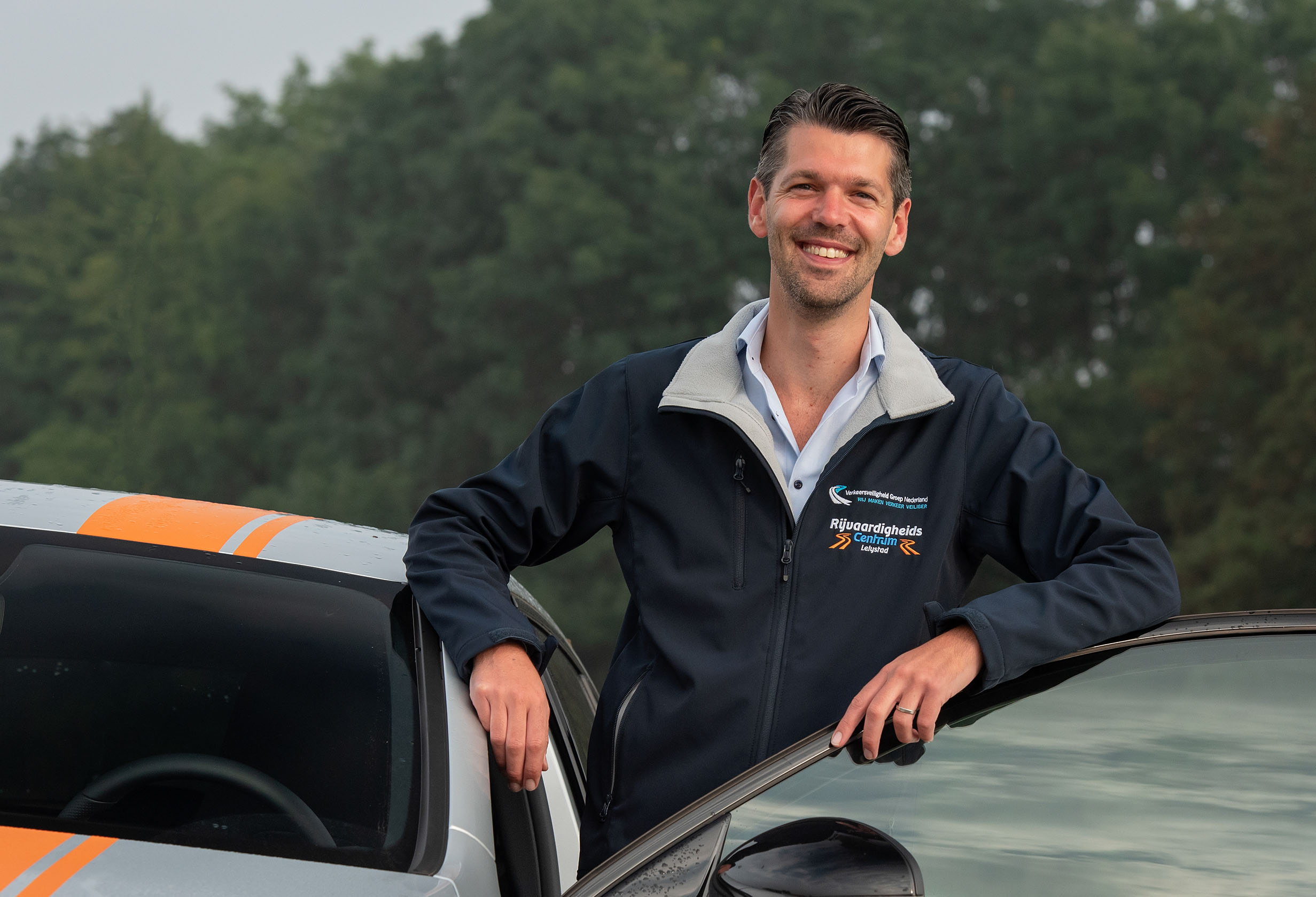Dragintra advises employers on driving skills training for their employers. For your safety. And, truth be told, less damage, while driving more economically also saves a lot of money. We don’t give the training ourselves, but work closely with Verkeersveiligheid Groep Nederland (VVGN), the leading experts in traffic safety training. For hundreds of our clients’ employees, VVGN organises courses at Rijvaardigheidcentrum Lelystad, on the road and online. How does Dragintra’s partner improve your traffic safety?
It’s all about creating awareness. Collin Bell of VVGN says, “We let people drive through our ‘WhattsApp Lane’, with the instruction to send text messages. People who text while driving don’t see traffic signs, or end up in the gravel. It’s an amazing eye-opener.” The anti-skid course is always great fun. “It’s a playground for grown-ups. But you do go home realising that driving is a bit more difficult than you thought.”
Driving electric vehicles: not difficult, but different
VVGN provides an ever greater number of courses for electric driving. “People think it’s just a new car. But in the first six months the risk of accidents is 50% greater. The main cause is the huge acceleration.” Driving safely and increasing your range are the central themes of the courses.
One training day increases range by 110 km
The range in particular makes that employees are not universally enthusiastic about electric driving. Collin, “We’ve just completed a training for couriers. They were particularly sceptical. The projected range for one of the participants was 310 km at the start of the day. Together with our instructor, he drove some 150 km on recognisable routes. At the end of the day, the calculated remaining range was 270 km. Only 40 km less, after having driving 150 km.”
One training day in fact added 110 km to the range. Collin explains, “The greatest gain is so-called regenerative braking. Basically, you only use the accelerator. Let go of the accelerator and the car brakes using its electric motor, which is fitted with a dynamo that recharges the car battery.” To regenerate, you must anticipate. That way, you limit the need to use the brake pedal.
Other tips to increase the range?
The air conditioning and heating use a lot of energy. Turning them off isn’t always comfortable, though. Collin, “A tip is to cool or heat your EV while charging. As a result, the temperature in your car is fine when you start driving and you don’t need to cool or heat excessively.”
Using cruise control for a constant speed, reducing your speed, and the correct tire pressure also help.
E-Driver: geared to completing courses
Another way to improve your driving behaviour is e-Driver. Online courses often feel like an obligation, but e-Driver is different. 98% of the employers using the online tool recommend it to colleagues. And a whopping 95% complete the training.
“Every six weeks you get a new five-minute training.” The training comprises instruction, during which the user gets to answer questions. Based on whether your replies are correct or wrong, a different follow-up video starts. “Say, Collin drives sustainably, but his reaction to traffic situations is dreadful. Then the next part of Collin’s training focuses on improving anticipation and reactions. We don’t use animations, but real people. It’s like you’re interacting with the expert.”
Another fun feature: “You see where you are in the virtual traffic jam of colleagues. Many correct answers and completed courses mean you move forward in the traffic jam.” Anonymously, of course.
The results?
How do the VVGN courses benefit all those drivers? “They become increasingly aware of how they drive and how others drive. What you hear is, ‘This morning, I saw some so-and-so drink coffee and text.’ Fewer accidents, less damage, saving fuel, and in the case of EVs up to 20% increase in range”, says Collin. “That’s how we help employers reduce their emissions and safely transform to electric driving.”
Would you like to know more about the courses offered by VVGN? Check their YouTube channel.


